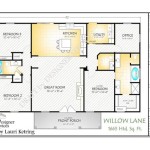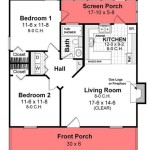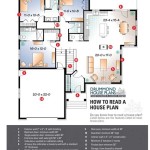House plans are essential for constructing a home, providing a blueprint for the structure, layout, and systems of the building. They serve as a crucial guide for architects, contractors, and homeowners throughout the construction process, ensuring that the final product meets the desired specifications and requirements.
Finding the right house plans for your home can seem like a daunting task, but with the right approach, it can be a smooth and rewarding experience. From online repositories to professional architects, there are numerous avenues available to help you source house plans that align with your vision and needs.
In this article, we will explore different methods for finding house plans, providing guidance on reputable sources, and discussing key factors to consider when making your selection. By following these steps, you can effectively find house plans that will lay the foundation for your dream home.
To successfully find house plans for your dream home, consider these important points:
- Define your needs and preferences
- Explore online repositories
- Consult with professional architects
- Consider stock house plans
- Customize existing plans
- Check building codes and regulations
- Obtain professional review
- Review house plan details thoroughly
- Consider energy efficiency
By following these guidelines, you can effectively find house plans that meet your specific requirements and lay the foundation for your dream home.
Define your needs and preferences
The first step in finding house plans that align with your vision is to clearly define your needs and preferences. Consider the following factors to narrow down your search and ensure that the plans you select meet your specific requirements:
- Number of bedrooms and bathrooms: Determine the number of bedrooms and bathrooms you need to accommodate your family and guests comfortably.
- Square footage and layout: Consider the desired size of your home and the layout that best suits your lifestyle. Think about the flow of traffic, the placement of rooms, and the amount of natural light you prefer.
- Architectural style: Choose an architectural style that resonates with your aesthetic preferences. Consider factors such as the exterior design, roofing materials, and window styles.
- Special features and amenities: Identify any special features or amenities that are important to you, such as a home office, a gourmet kitchen, or a spacious outdoor living area.
By carefully considering your needs and preferences, you can effectively narrow down your search for house plans and increase the likelihood of finding a design that aligns perfectly with your vision.
Explore online repositories
Online repositories offer a vast selection of house plans, ranging from traditional to modern designs and everything in between. These repositories provide a convenient and efficient way to browse and compare plans from multiple sources, allowing you to narrow down your search and find the perfect design for your dream home.
One of the leading online repositories for house plans is HousePlans.com. This website offers a comprehensive collection of over 30,000 house plans from renowned architects and designers. HousePlans.com allows you to filter your search by various criteria, including architectural style, square footage, number of bedrooms and bathrooms, and special features. The website also provides detailed information about each plan, including floor plans, elevations, and construction details.
Another popular online repository for house plans is ArchitecturalDesigns.com. This website features a wide range of house plans, including custom designs, stock plans, and plans for specific home types, such as vacation homes, cabins, and multi-family dwellings. ArchitecturalDesigns.com offers a user-friendly interface that allows you to easily browse and compare plans based on your preferences. The website also provides helpful resources, such as articles on home design and construction, to assist you in your decision-making process.
In addition to HousePlans.com and ArchitecturalDesigns.com, there are numerous other online repositories where you can find house plans. These repositories include:
- Floorplans.com
- The Plan Collection
- ePlans.com
- CADdetails.com
- Homeplans.com
When exploring online repositories for house plans, it is important to carefully review the details of each plan before making a purchase. Pay attention to the square footage, number of bedrooms and bathrooms, architectural style, and any special features or amenities. Additionally, be sure to read the reviews and testimonials of other customers to get an idea of the quality of the plans and the customer service provided by the repository.
Consult with professional architects
Professional architects offer a wealth of knowledge and expertise in the field of home design and construction. Consulting with an architect can be an invaluable resource when searching for house plans that meet your specific needs and preferences.
- Personalized design: Architects can create custom house plans tailored to your exact requirements, ensuring that your dream home is unique and perfectly suited to your lifestyle.
- Technical expertise: Architects possess the technical expertise to design homes that are structurally sound, energy-efficient, and compliant with building codes and regulations.
- Space planning: Architects are skilled in space planning, ensuring that your home’s layout flows seamlessly and maximizes natural light and ventilation.
- Project management: Architects can provide comprehensive project management services, overseeing the entire design and construction process from start to finish.
While consulting with a professional architect may require a financial investment, it can ultimately save you time, money, and stress in the long run. An architect can help you avoid costly mistakes and ensure that your home is built to the highest standards of quality and craftsmanship.
Consider stock house plans
Stock house plans are pre-designed plans that are available for purchase from a variety of sources, including online repositories and home builders. These plans are typically less expensive than custom plans and can be a good option if you are looking for a more affordable way to build your dream home.
- Cost-effective: Stock house plans are generally less expensive than custom plans, as they have already been designed and engineered.
- Time-saving: Stock plans are readily available, which can save you time compared to having a custom plan designed from scratch.
- Variety of options: Stock house plans are available in a wide range of styles, sizes, and configurations, making it easier to find a plan that meets your needs.
- Proven designs: Stock house plans have been built and tested, which can provide peace of mind that the design is sound and will result in a well-built home.
It is important to note that while stock house plans can be a more affordable option, they may not be as customizable as custom plans. However, many stock plans can be modified to some extent to accommodate your specific needs and preferences.
Customize existing plans
Customizing existing house plans is a great way to find a plan that meets your specific needs and preferences while saving money compared to having a completely custom plan designed from scratch. Many stock house plans can be modified to some extent, allowing you to make changes to the layout, size, and features of the home to create a truly unique design.
When customizing an existing house plan, it is important to work with a qualified architect or designer who can help you make the changes you want while ensuring that the plan remains structurally sound and compliant with building codes. Your architect or designer can also help you select finishes and materials that fit your style and budget.
Some common customizations that people make to existing house plans include:
- Changing the number of bedrooms or bathrooms
- Modifying the layout of the kitchen or other rooms
- Adding or removing features such as a fireplace, a garage, or a porch
- Changing the exterior style of the home
The cost of customizing an existing house plan will vary depending on the extent of the changes you want to make. However, it is typically less expensive than having a completely custom plan designed from scratch. If you are looking for a way to save money on your dream home without sacrificing your vision, customizing an existing house plan is a great option.
In addition to the benefits mentioned above, customizing an existing house plan can also be a good way to ensure that your home is unique and reflects your personal style. By working with an architect or designer, you can create a home that is tailored to your specific needs and preferences, and that you will love for years to come.
Check building codes and regulations
Before you finalize your house plans, it is important to check building codes and regulations to ensure that your home will be compliant. Building codes are established by local governments to ensure that homes are safe and habitable. They cover a wide range of topics, including structural integrity, fire safety, plumbing, and electrical systems.
- Zoning laws: Zoning laws determine what types of buildings can be built in a particular area. They may also restrict the size, height, and setbacks of buildings.
- Building codes: Building codes specify the minimum standards for the construction of homes. They cover everything from the foundation to the roof, including structural elements, fire safety features, and energy efficiency requirements.
- Fire codes: Fire codes are designed to prevent and mitigate the spread of fire in buildings. They specify requirements for fire alarms, sprinklers, and other fire safety features.
- Plumbing codes: Plumbing codes govern the installation and maintenance of plumbing systems in homes. They ensure that water is supplied safely and that wastewater is disposed of properly.
It is important to check building codes and regulations early in the planning process to avoid costly delays or redesigns. You can obtain copies of building codes and regulations from your local building department. You can also hire a qualified architect or contractor to help you interpret the codes and ensure that your plans are compliant.
Obtain professional review
Once you have selected a few house plans that meet your needs and preferences, it is a good idea to obtain a professional review from an architect or engineer. A professional review can help you to identify any potential issues with the plans, such as structural problems, code violations, or design flaws. This can save you time and money in the long run, as it can help to avoid costly mistakes during the construction process.
When choosing a professional to review your house plans, it is important to select someone who is qualified and experienced in residential design. You should also make sure that the professional is familiar with the building codes and regulations in your area. Once you have selected a professional, you should provide them with a copy of your house plans and any other relevant information, such as the soil conditions on your building site.
The professional will then review your plans and provide you with a report that outlines any issues that they have identified. The report may also include recommendations for how to correct the issues. It is important to carefully review the report and discuss any concerns that you have with the professional. Once you are satisfied with the review, you can proceed with the construction process with confidence, knowing that your house plans have been reviewed by a qualified professional.
In addition to the benefits mentioned above, obtaining a professional review of your house plans can also help you to:
- Avoid delays during the construction process
- Reduce the risk of costly mistakes
- Ensure that your home is built to the highest standards of quality and safety
If you are planning to build a new home, it is highly recommended that you obtain a professional review of your house plans. This can help you to avoid costly mistakes and ensure that your dream home is built to the highest standards.
Review house plan details thoroughly
Once you have selected a few house plans that meet your needs and preferences, it is important to review the details of each plan thoroughly before making a final decision. This will help you to identify any potential issues with the plans, such as structural problems, code violations, or design flaws.
When reviewing house plans, there are a number of key details that you should pay attention to, including:
- The overall layout of the home: Make sure that the layout of the home flows well and that the rooms are arranged in a logical way. You should also pay attention to the size and shape of the rooms, as well as the placement of windows and doors.
- The structural integrity of the home: The house plans should include detailed information about the structural elements of the home, such as the foundation, framing, and roof. You should make sure that these elements are designed to meet the building codes in your area and that they are adequate to support the weight of the home.
- The energy efficiency of the home: The house plans should include information about the energy efficiency features of the home, such as the insulation, windows, and doors. You should make sure that these features are designed to meet the energy efficiency standards in your area and that they will help to reduce your energy bills.
- The accessibility of the home: If you or anyone in your family has mobility impairments, you should make sure that the house plans include features that will make the home accessible, such as ramps, wide doorways, and accessible bathrooms.
In addition to the key details listed above, you should also review the house plans for any specific features or amenities that you are interested in, such as a fireplace, a garage, or a swimming pool. You should also make sure that the house plans are compatible with the size and shape of your building lot.
Once you have reviewed the house plans thoroughly, you should discuss them with a qualified contractor or architect to get their professional opinion. This can help you to identify any potential issues with the plans that you may have overlooked and to make sure that the plans are feasible for your building site.
Consider energy efficiency
When choosing a house plan, it is important to consider the energy efficiency of the home. An energy-efficient home can save you money on your energy bills and help to reduce your carbon footprint. There are a number of ways to make a home more energy efficient, including:
- Insulation: Insulation is one of the most important factors in determining the energy efficiency of a home. It helps to keep the home warm in the winter and cool in the summer, reducing the need for heating and cooling. There are a variety of different types of insulation available, so it is important to choose one that is appropriate for your climate and budget.
- Windows and doors: Windows and doors are another important factor in determining the energy efficiency of a home. Energy-efficient windows and doors are designed to minimize heat loss and gain. Look for windows and doors that have a high Energy Star rating.
- Appliances: Energy-efficient appliances can also help to reduce your energy bills. When purchasing new appliances, look for the Energy Star label. Energy Star appliances meet strict energy efficiency standards set by the U.S. government.
- Lighting: Lighting accounts for a significant portion of the energy used in a home. By using energy-efficient lighting, you can reduce your energy bills and help to protect the environment. There are a variety of energy-efficient lighting options available, including LED bulbs, CFL bulbs, and solar lights.
In addition to the measures listed above, there are a number of other ways to make your home more energy efficient, such as installing a programmable thermostat, sealing air leaks, and using renewable energy sources. By taking these steps, you can create a home that is comfortable, affordable, and environmentally friendly.










Related Posts








